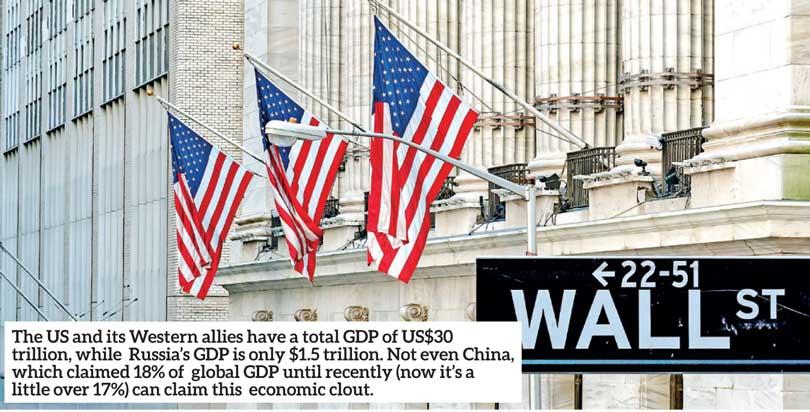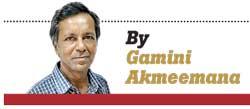Reply To:
Name - Reply Comment

 As a turbulent world races into year 2024, the only remaining superpower is a troubled giant (China is a great power, but its military (especially naval) and nuclear forces are still no match for America’s, and it would be economically disastrous for China to start an arms race with the US now with its economy in trouble).
As a turbulent world races into year 2024, the only remaining superpower is a troubled giant (China is a great power, but its military (especially naval) and nuclear forces are still no match for America’s, and it would be economically disastrous for China to start an arms race with the US now with its economy in trouble).
The American economy is in trouble, too, with the US dollar losing its value and dire predictions of another Great Depression by next year, though some analysts predict that the US will emerge in better shape from a possible economic crash than any other country in the world.
But the economic health of a country is not the whole story. Ideas, ideologies, and societal trends which shape minds, and those elusive but essential psychological factors which form the mental health of a nation and make it happy or unhappy as a country – these are important indicators too, of a given country’s future and its ability to escape the fragmentation and deep social malaises that characterise much of the world today.
The US economy is in deficit, but it has been that way for years and, as Prof. Yanis Varoufakis points out, is very strong because mega business conglomerates across the world – from Western Europe to Japan and China – invest in Wall Street. The US and its Western allies have a total GDP of US$30 trillion, while Russia’s GDP is only $1.5 trillion. Not even China, which claimed 18% of global GDP until recently (now it’s a little over 17%) can claim this economic clout.
Biggest consumer society
In that case, why is the US economy in danger of recession? A bewildering number of reasons are given by an equally bewildering number of experts, but Danielle DiMartino Booth, CEO of QI Research, has some convincing arguments.
The US is by far the biggest consumer society in the world. The Chinese were catching up, but are now falling behind. She says the biggest consumers are those Americans in the $125,000-$250,000 per annum income bracket. These aren’t the very rich, but middle and upper middle class people with good jobs or businesses. They account for 20% of the consumer market, and they are all using their credit cards to the hilt.
To get an idea of American income disparities, one can compare this figure with the average annual income of a Greyhound bus driver, who earns $40,000 per annum. This iconic bus service which carries more passengers across America than the M Track rail system is now in crisis. Its passenger terminals have been sold off mainly to foreign buyers. In future, Greyhound passengers awaiting buses will have to stand in the open.
The credit card default rate has gone up. She says Americans are heroin addicts when it comes to credit cards. In December 2023, American credit card debt went up by a staggering $55.8 billion in a month. This is unprecedented. The reason, according to her, is that those in the high income brackets have so many commitments – house mortgages, college loans, car payments etc., while the young, seeing that they can’t afford to buy homes any more, decide to live the good life while they can – by using their credit cards.
Layoffs
Both banks and credit card holders are in trouble. DiMartino Booth cites the example of ‘Buy Now – Pay Later’ firms in the US. Originally, these were for selling furniture, but this scheme is now applied even to groceries. She says ‘aggressive job layoffs’ will happen from March onwards. Silicon Valley and the tech industry began serious layoffs last year, and Amazon has done three rounds of layoffs. Now this is spreading into other industrial and business areas.
Dr. Marc Faber is a Swiss-born American economic analyst now living in Thailand. He too, believes that higher bank interest rates are to blame for the looming crisis. The US deficit is now at 6% and interest on that is a lot of money, causing higher inflation. He defines inflation as a monetary increase in the system; in other words, the quantity of money goes up. But he adds that high inflation is not necessarily a yardstick of the state of an economy, citing the case of Turkey which has interest rates of 100% and also an inflation rate of 100%. But life goes on as usual in Istanbul.
But what if interest rates in the US go up such levels? The more one listens to financial experts, the murkier things can look. Dr. Faber jokes that the safest course for Americans to take in future is to invest in gold and bury it in their gardens without telling their relatives, without investing their savings in paper money.
But how many Americans have the money to buy gold with? A Greyhound bus driver is unlikely to have any savings to invest in anything. Living in a cramped city apartment, he won’t have a garden to bury anything in. He may not even have the money for proper medicare. In 2023, 7.9% of Americans didn’t have health insurance, though this is said to be a record low figure. Not having health insurance can lead to large debt and may even hurt people at tax time.
The way things are now, even those in the higher income brackets may not have the money if they are using their credit cards so much. Dr. Faber adds that America’s prosperity has always been such that there should be no poor people there at all.
But many Americans are poor. As for US poverty levels, there are conflicting reports. Two measures are used to measure poverty in the US: the Official Poverty Measure, according to which the official US poverty rate in 2022 was 11.5 percent, with 37.9 million people in poverty. Neither the rate nor the number in poverty was significantly different from 2021.
The official poverty rate for Black individuals decreased between 2021 and 2022. The 2022 rate was the lowest on record.
Social Security
The other is the Supplemental Poverty Measure. The SPM rate in 2022 was 12.4 percent, an increase of 4.6 percentage points from 2021. The SPM child poverty rate more than doubled, from 5.2 percent in 2021 to 12.4 percent in 2022, while Social Security continued to be the most important US antipoverty programme in 2022, moving 28.9 million people out of SPM poverty.
But what do these conflicting reports tell us? That there are a lot of poor people in the US. Eleven or 12 per cent poor out of a total population of 334.2 million is still a lot of poverty. If all these gloomy economic forecasts now being made by financial experts turn out to be true, these people are going to be hit very hard even with social security.
Statistically, around 10% of American retirees have $1 million or more in savings as of Jan, 2024. These are the people who are now being advised to bury gold in their gardens. A new GOBankingRates survey found that most Americans had $1,000 or less in personal savings in 2023; a third have $500 or less saved, while 8.5% have between $501 and $1,000. This hardly amounts to anything now even in Sri Lanka. In September 2023, the survey found that 11.4% of Americans have no savings at all.
If the US economy goes into a deep recession, what happens to these people, and what about the rest of the world?